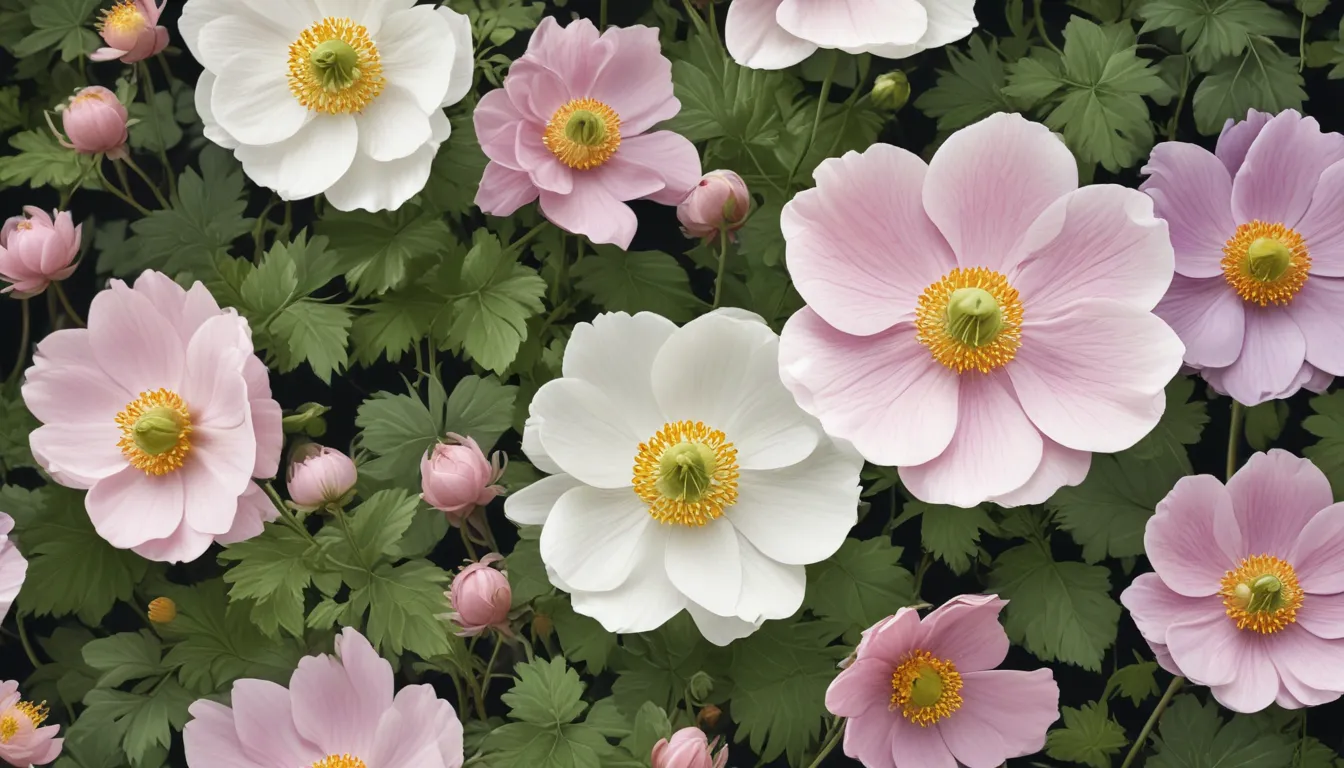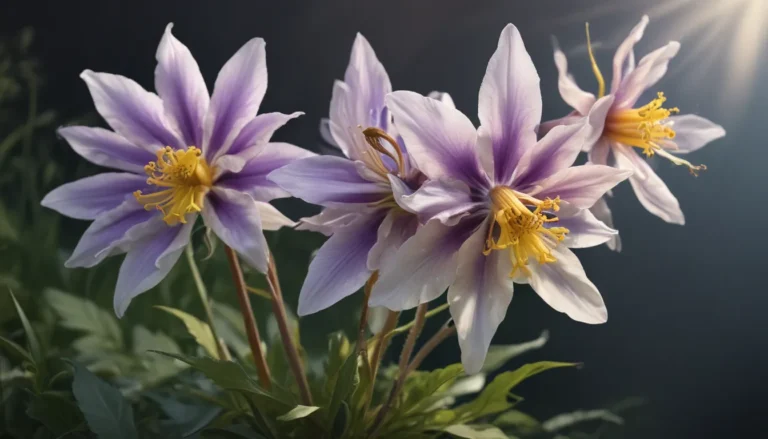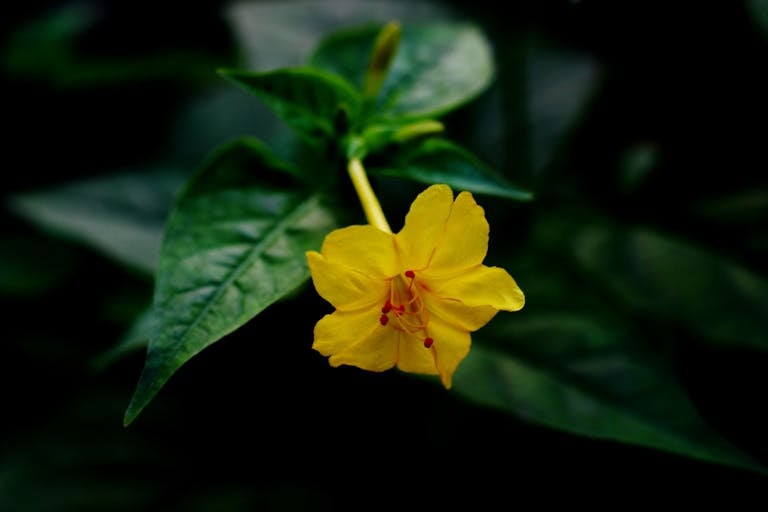The pictures we use in our articles might not show exactly what the words say. We choose these pictures to make you interested in reading more. The pictures work together with the words but don’t take their place. The words still tell you the important facts.
Japanese Anemone, also known as Anemone japonica, is a stunning flowering plant native to Japan. Celebrated for its delicate flowers in shades of white, pink, and purple, this plant is not only a beautiful addition to gardens but also holds many surprising facts that may pique your interest. From its resilience in various conditions to its medicinal properties, Japanese Anemone is a remarkable species worth exploring. Let's delve into 13 intriguing facts about Japanese Anemone that will deepen your appreciation for this enchanting floral plant.
The Versatile Ranunculaceae Family
The Japanese Anemone, scientifically named Anemone hupehensis, belongs to the Ranunculaceae family. This family encompasses popular flowers such as buttercups and columbines, showcasing the diverse and fascinating world of floral species.
Late Summer Blooms
Unlike many other plants, the Japanese Anemone blooms in late summer and continues to flower into early fall. This unique blooming period offers a splash of color during the transition from summer to fall, making it a delightful addition to any garden.
A Kaleidoscope of Colors
Japanese Anemone comes in various shades, including pink, white, and purple. This diversity in colors allows for creative gardening opportunities, enabling the creation of stunning color combinations in flower beds that are sure to captivate the eyes.
Perennial Beauty
As a perennial plant, Japanese Anemone returns year after year, providing a long-lasting and low-maintenance option for gardeners. This longevity and reliability make it a valuable investment for those seeking enduring beauty in their gardens.
Pollinator Magnet
In addition to its beauty, Japanese Anemone attracts butterflies and bees, making it a vital element in pollinator gardens. These insects play a crucial role in pollination, contributing to the reproduction of other plants in the ecosystem and promoting biodiversity.
Thrives in Partial Shade
Preferring partial shade over full sun, Japanese Anemone is an excellent choice for areas of the garden that receive dappled sunlight or are shaded by trees or buildings. This adaptability to varying light conditions enhances its versatility in garden landscapes.
Soil Versatility
An exceptional quality of Japanese Anemone is its ability to thrive in a wide range of soil conditions, including loamy, sandy, or clay soils, as long as they are well-drained. This adaptability makes it suitable for different gardening environments.
Rhizome Spread
Japanese Anemone spreads through rhizomes, underground stems that produce new shoots and roots. This gradual expansion allows the plant to form beautiful clusters over time, adding depth and beauty to garden landscapes.
Deer-Resistant Charm
Known for its deer-resistant nature, Japanese Anemone is a great choice for gardens where deer may pose a nuisance. Its ability to resist browsing ensures that the plant remains intact and continues to flourish undisturbed.
Medicinal Legacy
In traditional Japanese medicine, certain parts of the Japanese Anemone plant are believed to have medicinal properties. Used to treat respiratory conditions and digestive issues, this plant carries a rich legacy of healing properties.
Legends and Symbolism
In Japanese culture, Japanese Anemone is steeped in legends and symbolism. Often associated with undying love, good luck, and protection for the home, this plant holds a significant place in the cultural tapestry of Japan.
Cut Flower Elegance
With its delicate blooms and long stems, Japanese Anemone is a popular choice for cut flower arrangements. Its graceful appearance adds a touch of elegance to floral displays, making it a sought-after option for bouquets and decorations.
Propagation Made Simple
Japanese Anemone can be easily propagated through division, where a clump of the plant is separated and replanted in a different location. This straightforward method allows gardeners to expand their collection of Japanese Anemone plants with ease.
In conclusion, Japanese Anemone stands out as a captivating flower with a host of remarkable characteristics. From its striking blooms and pollinator-attracting qualities to its adaptability and longevity, this plant offers a blend of beauty and resilience that is sure to enhance any garden. Whether you're a seasoned gardener or a novice enthusiast, consider adding Japanese Anemone to your landscape for a touch of color and charm that will last for years to come.
FAQs About Japanese Anemone
Are Japanese Anemones easy to grow?
Yes, Japanese Anemones are generally easy to grow, as they adapt to various soil types and light conditions, making them a versatile and accessible choice for gardeners.
When do Japanese Anemones bloom?
Japanese Anemones typically bloom in late summer or early fall, providing a vibrant display of colors when many other plants are fading, adding a refreshing burst of beauty to garden landscapes.
How tall do Japanese Anemones grow?
Depending on the variety, Japanese Anemones can reach heights ranging from 2 to 5 feet, making them suitable for mid to back border plantings, where they can stand out and command attention.
Do Japanese Anemones attract pollinators?
Yes, Japanese Anemones are known for attracting butterflies, bees, and other pollinators to gardens, fostering a healthy and dynamic ecosystem that supports plant reproduction and biodiversity.
Can Japanese Anemones be grown in containers?
Yes, Japanese Anemones can thrive in containers, provided that the containers are sufficiently large to accommodate their root systems and offer proper drainage for optimal growth.
How do I propagate Japanese Anemones?
Japanese Anemones can be propagated through division or root cuttings, making it a simple and effective process to multiply your plants. Dividing established clumps in spring or fall yields the best results for successful propagation.
Explore more fascinating flowers and plants, from the resilient Anemone Hepatica to the unique Fatsia Japonica, and uncover the secrets, beauty, and resilience of diverse botanical species. Our engaging content is designed to inspire and inform gardeners and nature enthusiasts alike, encouraging the cultivation of stunning gardens filled with captivating flora.
Experience the Beauty of Japanese Anemone
Japanese Anemone offers a mesmerizing blend of beauty, resilience, and cultural significance that makes it a standout choice for gardeners seeking a versatile and enchanting plant. Embrace the allure of Japanese Anemone in your garden and appreciate its surprising characteristics that add a touch of elegance and charm to outdoor spaces.
Feedback Is Valued
Your feedback and contributions are essential in maintaining the highest standards of accuracy and authenticity in the content we deliver. Every fact shared on our platform is a result of real user engagement and insights, ensuring that our content is not only captivating but also trustworthy and reliable. Join us in the journey of exploration and learning, as we uncover the wonders of nature together.






